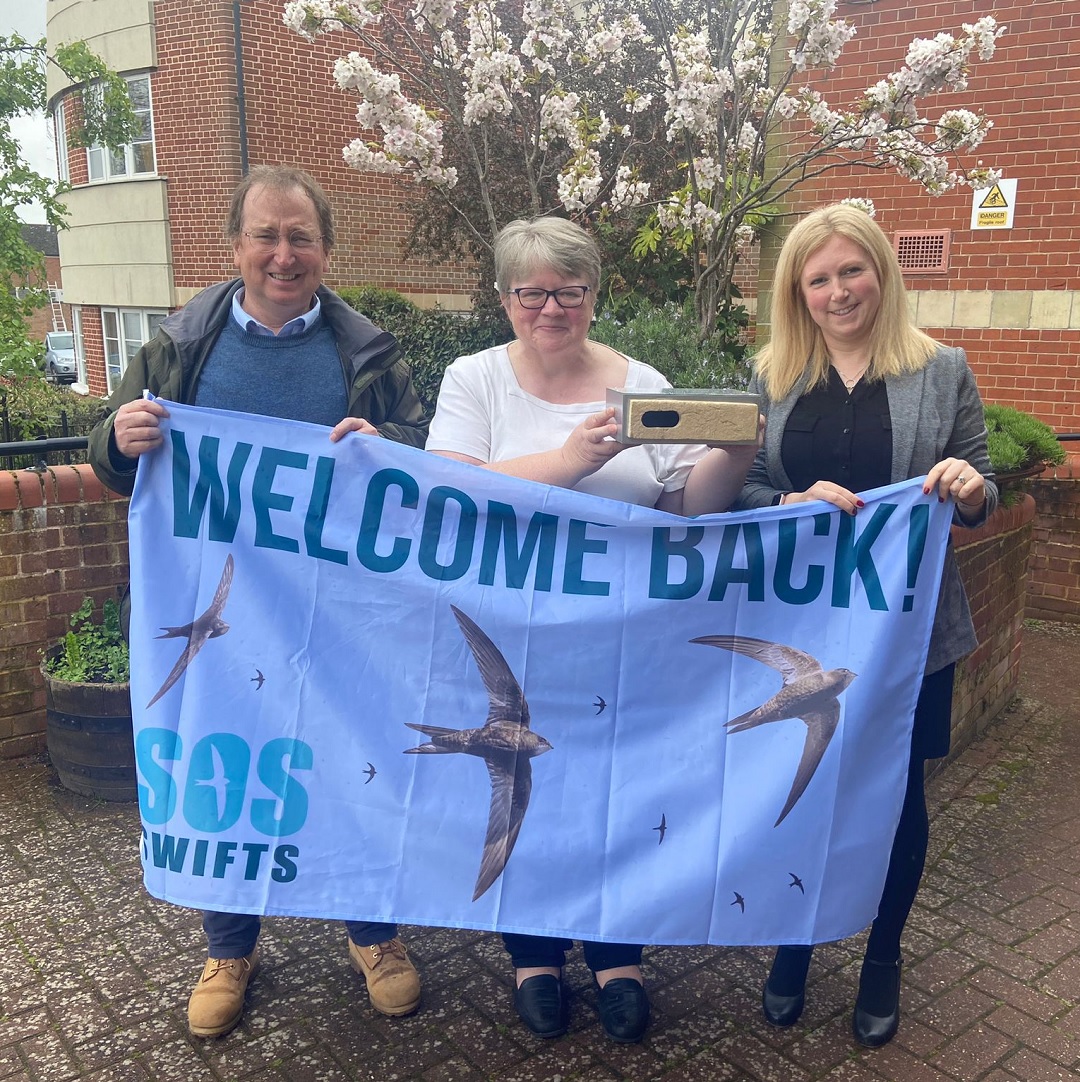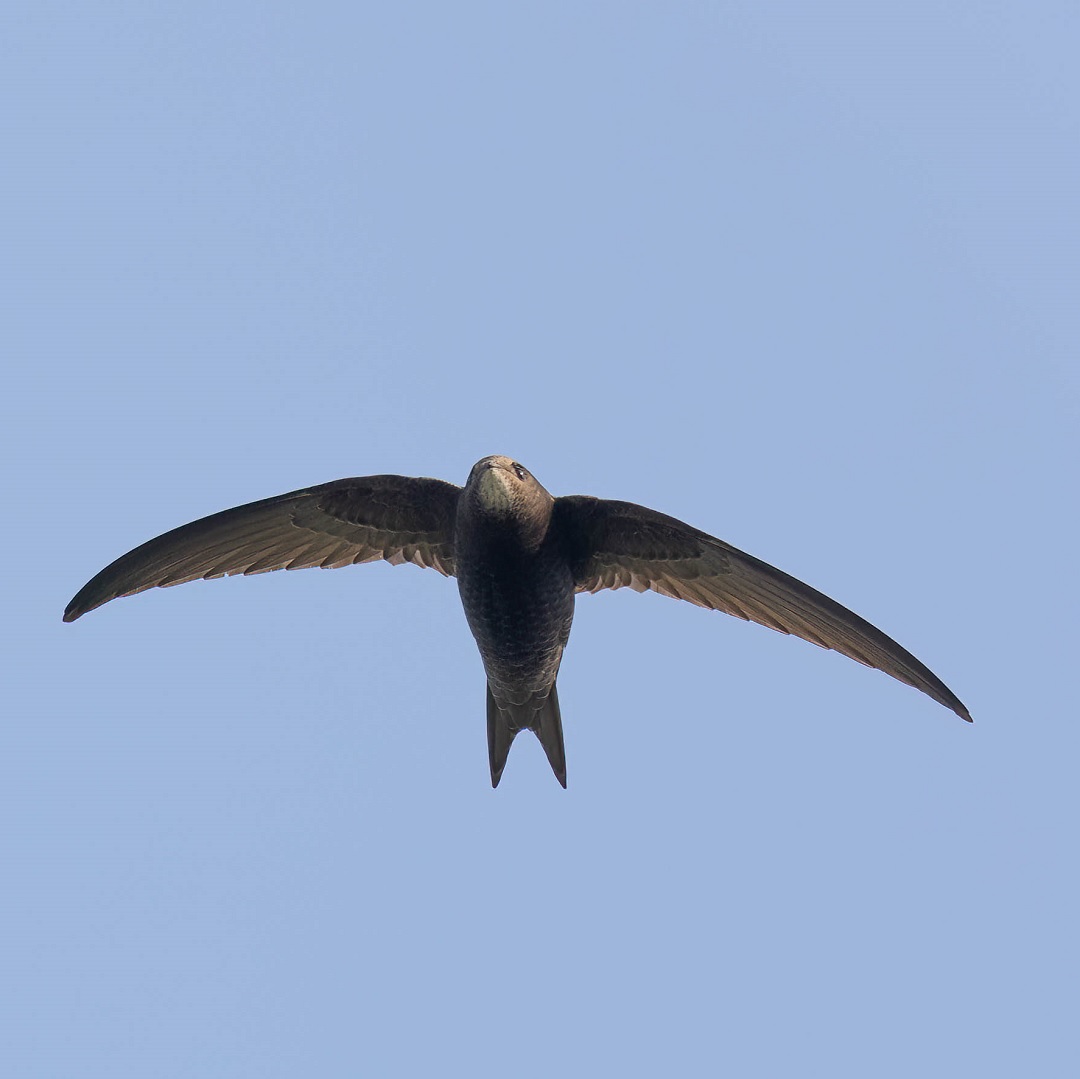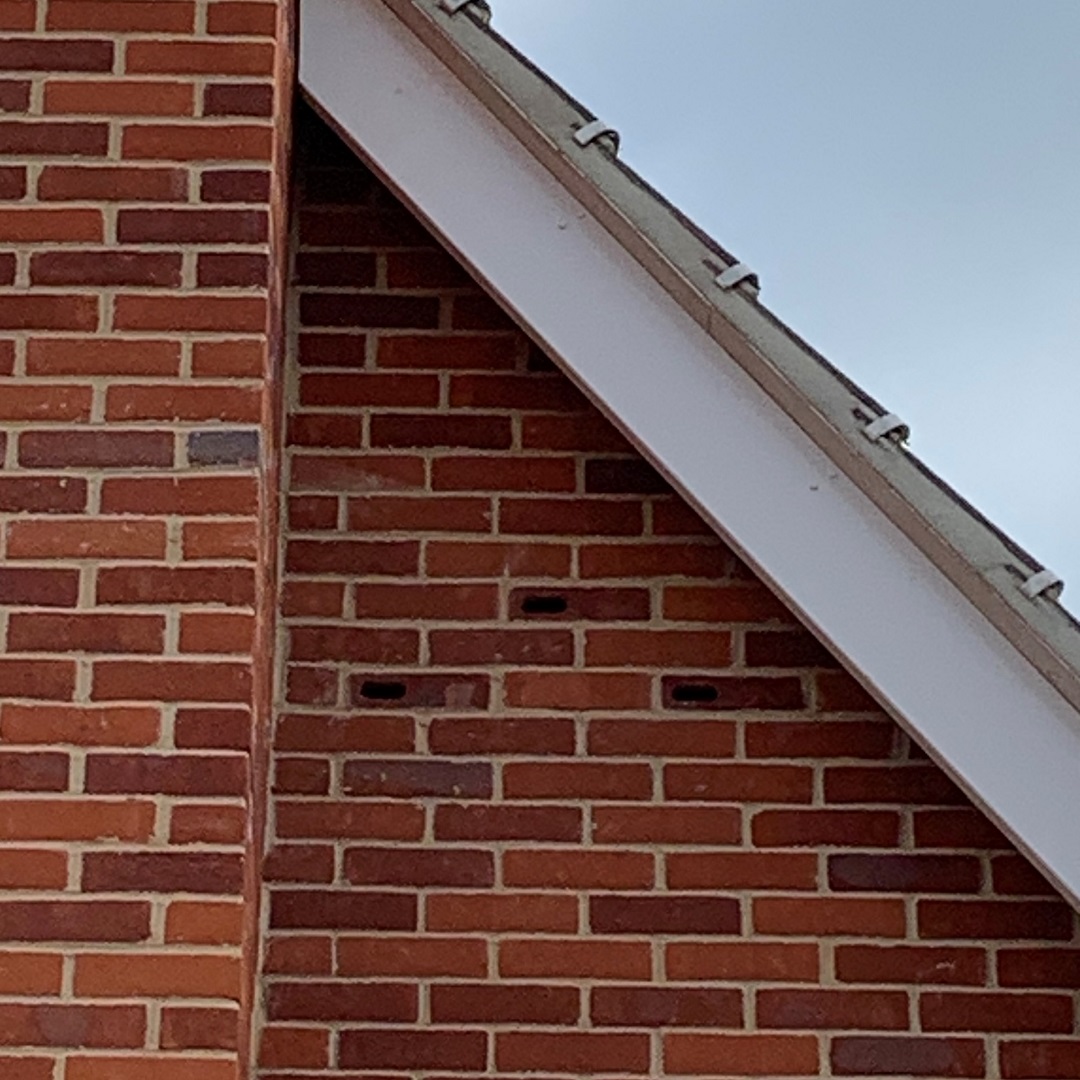Hope for Swifts
Swifts are one of the UK’s most endangered birds, primarily due to changes in their natural habitats and loss of nesting sites. But there is hope for this high-soaring bird.
‘Save our Suffolk Swifts’ campaigner, Eddie Bathgate tells us more about this fascinating bird and how he’s working with his employer, Hopkins Homes, to be part of the solution to their declining numbers.
Eddie explains that Swifts migrate from the UK every August, flying from our roofs all the way to Southern Africa and back again, crossing the Sahara twice and not landing until their return the following May. During their short stay, Swifts manage to raise a single family of two chicks.
Swifts remain in almost constant flight, only touching down to nest. Pairing for life, they are loyal to their nesting sites, often congregating in the crevices of older buildings to breed communally. Their nests are tidy and minimal. In fact, most homeowners are unaware of Swifts nesting high above them. However, over the last 25 years, there has been a decline in the Swift population of more than 50% due to the natural loss of nesting sites, predominantly caused by renovation works.
There are concerns that this remarkable bird will vanish as stringent modern building codes, designed to enhance energy efficiency and reduce noise, have inadvertently sealed off the Swifts’ nesting spaces.
Fortunately, an alternative solution has emerged in the form of ‘Swift bricks’ (or S-Bricks) which provide a home for Swifts and other cavity-nesting birds. S-Bricks can either be retrofitted or installed in place of a brick in a wall. They are sealed metal boxes with a brick front that matches the façade of the building to blend in. They never need to be cleared out and pose no hindrance to the building they are attached to. The bricks are positioned in small groups, high up on suitable gables where there is a clear line of flight for the Swifts to access.
Despite a government petition to make swift bricks compulsory in new housing, the current policy remains under the jurisdiction of local planning authorities, few of which have adopted a requirement to put swift bricks into new developments.
And while the national picture remains unclear, the East of England looks more promising for these stunning birds. In Suffolk alone, over 220 nest sites have been provided by the “Save Our Suffolk Swifts” campaign.
As a passionate campaigner for the group, Eddie has teamed up with his employer, Hopkins Homes, to help push the campaign forward. He commented, “Hopkins Homes has been installing S-bricks for some time now to help conserve this declining species. I am delighted that they are continuing to support this campaign, going above and beyond what local policy dictates.”
Eddie is understandably optimistic about the future – in his part of the country at least.
Eddie continued, “I would like to thank Thérèse Coffey, MP for Suffolk Coastal, for writing to the new leader of East Suffolk Council to request that S-bricks form a condition for new planning permissions.
“Government needs to urgently put national measures in place to provide for endangered species in new build housing, so that we can enjoy seeing these birds in our skies for generations to come. We can all help make a difference. There is no time to waste.”
Photos:
- Save our Suffolk Swifts campaigner, Eddie Bathgate, with local MP, Therese Coffey
- A Swift in flight, photo credit: Dr Michael Bamford
- Nest bricks at Hopkins Homes new development at Church View, Bramford


